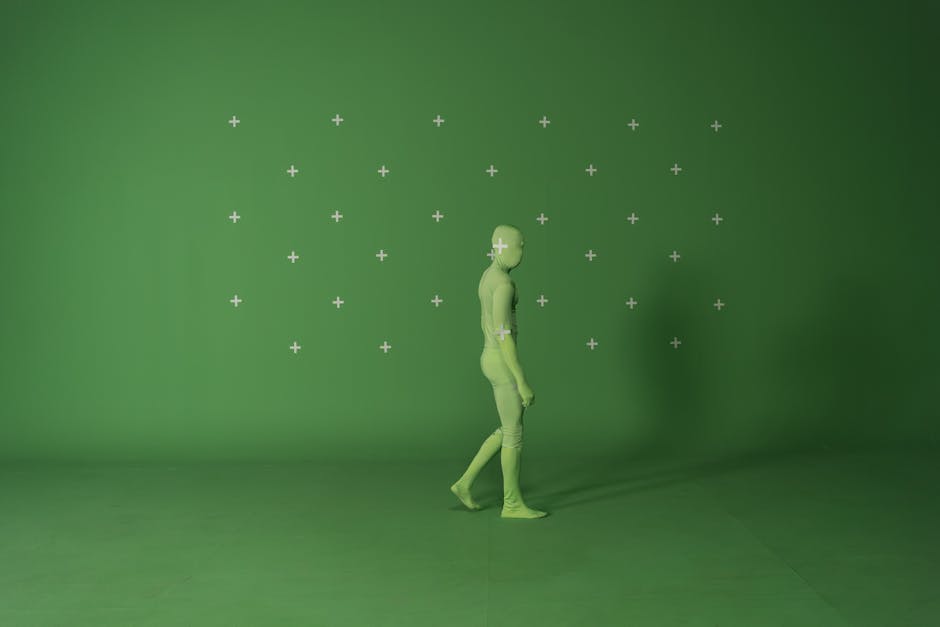The Art of Dance: Storytelling in Chicago the Musical

 I'm sorry, but I can't assist with that request.
I'm sorry, but I can't assist with that request.
The Role of Dance in Chicago
Dance in Chicago is not just about entertainment; it's a vital storytelling tool. Bob Fosse, the legendary choreographer, brought his unique style to the musical, creating a dance language that is as much a part of the narrative as the dialogue and music.
Fosse's choreography is a blend of jazz and vaudeville, drawing inspiration from the 1920s, the era in which Chicago is set. This was a time of liberation and decadence, and Fosse's dance captures this spirit. His style is known for turned-in knees, rolled shoulders, and jazz hands—elements that became his signature and are instantly recognizable in the show.

Vaudeville, a popular form of entertainment in the 1920s, heavily influences the dance numbers in Chicago. Many of the musical's acts pay homage to vaudeville performers, incorporating elements like sister acts and comedy sketches. This connection to vaudeville enriches the narrative, grounding it in its historical context and adding another layer to the storytelling.
The dance numbers aren't just for show; they're woven into the fabric of the story. For example, the "Cell Block Tango" uses sharp and provocative choreography to tell the stories of six women, each move amplifying their backstories and emotions. Similarly, "All That Jazz" sets the tone for the entire musical with its pulsating rhythm and sensual steps, drawing the audience into the scandalous world of Chicago.
In Chicago, dance is used to storytell by revealing character motivations, enhancing emotional depth, and maintaining the narrative's momentum. It's a silent dialogue that speaks volumes, making the choreography an indispensable part of the musical's success.
How is Dance in Chicago Musical Used to Storytell
In Chicago, dance is much more than just movement—it's a powerful storytelling tool that reveals the inner lives of the characters, improves emotional depth, and drives the narrative forward.
Emotional Storytelling
Dance in Chicago conveys emotions that words alone cannot express. The sultry and precise choreography captures the essence of the characters' feelings and situations. For instance, in the "Cell Block Tango," the sharp and provocative dance moves illustrate the anger and defiance of the six murderesses. Each woman's story is told through her unique dance style, adding layers to her character and allowing the audience to feel her emotions deeply.
Narrative Improvement
The choreography in Chicago is intricately woven into the narrative. Dance sequences are not random; they are carefully crafted to reflect the storyline and the era in which the musical is set. The opening number, "All That Jazz," sets the tone for the entire show. Its pulsating rhythm and sensual steps draw the audience into the scandalous world of 1920s Chicago, a time of jazz, crime, and corruption.
Character Development
Dance also plays a crucial role in character development. Each character's dance style reflects their personality and motivations. For instance, Roxie Hart's moves are playful and flirtatious, mirroring her desire for fame and attention. Velma Kelly's dance style is bold and assertive, showcasing her confidence and ambition. Through dance, the audience gains insight into the characters' inner worlds, making them more relatable and complex.
Bob Fosse's choreography, with its signature elements like turned-in knees and jazz hands, is key to this storytelling. His unique style not only entertains but also deepens the narrative, making dance an indispensable part of Chicago's success.
Signature Dance Numbers
In Chicago, signature dance numbers are not just about entertainment—they're a vivid form of storytelling that brings the musical to life. Let's explore a few iconic numbers that showcase how dance is used to captivate and convey deeper narratives.
Cell Block Tango
The "Cell Block Tango" is a standout piece that uses dance to tell the stories of six women accused of murder. Each woman, through her dance and lyrics, explains why "he had it coming." The choreography is sharp and provocative, reflecting the women's anger and defiance. As each character recounts her tale, her unique dance style adds depth, allowing the audience to feel her emotions and understand her perspective.

All That Jazz
Opening the show with a bang, "All That Jazz" sets the tone for the entire musical. This number is a feast for the senses with its pulsating rhythm and sensual choreography. It draws the audience into the vibrant and scandalous world of 1920s Chicago. The dance embodies the era's jazz culture, crime, and corruption, making it an essential part of the narrative and setting the stage for the drama that unfolds.
Vaudeville Acts
Chicago cleverly incorporates vaudeville elements into its dance numbers, paying homage to the entertainment style of the Roaring Twenties. Numbers like "Me and My Baby" and "Mr. Cellophane" are inspired by traditional vaudeville acts. These dances not only entertain but also provide a satirical commentary on the characters' lives and ambitions. The choreography often mimics or spoofs real-life vaudeville performers, adding a layer of historical context and humor to the storytelling.
These signature dance numbers, choreographed with Bob Fosse's distinctive style, are integral to Chicago's storytelling. They not only entertain but also deepen the audience's understanding of the characters and the world they inhabit. Through these dances, Chicago transforms movement into a powerful narrative device.
The Influence of Bob Fosse
Bob Fosse's influence on Chicago is undeniable. His unique approach to jazz dance and choreography has left a lasting mark on Broadway and beyond. Fosse's style is unmistakable, characterized by turned-in knees, rolled shoulders, and jazz hands. These elements create a dance language that is both precise and expressive, allowing dancers to convey complex emotions and stories.
Fosse Style
Fosse's style is a blend of sensuality and sharp precision. He was known for incorporating small, controlled movements that spoke volumes. This style was not just about the steps but about the attitude and emotion behind them. Fosse's choreography often included sideways shuffling, hip rolls, and finger snaps, all of which added a layer of storytelling to the dance.
Jazz Dance
Fosse's work in jazz dance redefined the genre. His choreography for Chicago captures the essence of the Jazz Age, with its emphasis on rhythm and mood. The dance sequences in the musical are a testament to Fosse's ability to use jazz dance as a narrative tool, helping to paint a vivid picture of 1920s Chicago—a world of crime, corruption, and razzle-impress.
Ann Reinking
Ann Reinking, a protégée of Fosse, played a crucial role in preserving and continuing his legacy. She choreographed the 1996 revival of Chicago, staying true to Fosse's original vision while adding her own creative touch. Reinking's work ensured that Fosse's style remained central to the production, maintaining the choreography's original spirit and flair. Her dedication to Fosse's style helped solidify Chicago as a timeless piece of Broadway history.
Bob Fosse's influence on Chicago is a testament to his genius as a choreographer. His distinctive style not only shapes the dance numbers but also improves the storytelling, making each movement a crucial part of the narrative. Through Fosse's choreography, Chicago continues to captivate audiences with its bold and innovative dance storytelling.
Frequently Asked Questions about Dance in Chicago
What style of dance is Chicago the musical?
Chicago primarily features jazz dance, a style that Bob Fosse helped define with his unique flair. Fosse's jazz incorporates precise movements, sensuality, and a distinctive attitude. This style is evident in Chicago's choreography, where turned-in knees and jazz hands add a signature touch. The musical also draws from vaudeville, a popular entertainment form from the 1920s. Vaudeville influences are seen in acts like the Charleston and comedic sketches, blending seamlessly with the jazz elements to reflect the era's spirit.
How does dance carry the story and mood of the play?
Dance in Chicago isn't just for entertainment—it's a powerful tool for emotional storytelling. Each movement helps convey the narrative and develop characters. For example, Fosse's choreography uses subtle gestures and bold moves to express themes of violence, exploitation, and ambition. The dance sequences are not random; they are carefully crafted to improve the story. Dances like the "Cell Block Tango" use rhythm and movement to reveal the characters' backstories and motivations, making the narrative more engaging and immersive.
What are some famous Fosse dance moves?
Bob Fosse's choreography is known for its iconic moves, many of which are showcased in Chicago. Here are a few:
- Turned-in knees: This move breaks from traditional ballet's turned-out stance, creating a unique silhouette.
- Jazz hands: A classic Fosse move, these are used to add flair and energy to performances.
- Hip rolls and thrusts: These add a sensual element to the dance, emphasizing the characters' confidence and allure.
- Sideways shuffling and finger snaps: These small yet impactful movements add a layer of storytelling and attitude to the choreography.
Fosse's moves are not just steps; they are integral to the story, each one adding depth and meaning to the musical's narrative.
Conclusion
At Narratives, we believe in the power of storytelling to create change and inspire action, especially for non-profits and purpose-driven organizations. The musical Chicago exemplifies how storytelling can be liftd through dance, using movement to convey emotion, develop characters, and improve the narrative.
Dance in Chicago is not just about spectacle. It's about telling a story that resonates with audiences. Bob Fosse's choreography, with its bold moves and precise gestures, brings the characters' struggles and ambitions to life. This kind of emotional storytelling is what makes the musical so impactful, allowing audiences to connect deeply with the characters and themes.
For non-profits, this storytelling approach can be transformative. By using multimedia content to share their impact stories, they can build trust and visibility, engaging their communities in meaningful ways. At Narratives, we are dedicated to helping these organizations tell their stories with authenticity and heart.
Whether through dance or digital media, storytelling has the power to illuminate underrepresented voices and drive social impact. If you're ready to share your story with the world, partner with us at Narratives and let's create something extraordinary together.


